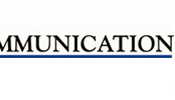

|
|
| Learn what to say... and what NEVER to say! |
|
|
Our PIE Model of Communication
|
Success Through Cyberspace: Writing Effective Emails By Edward Leigh, MA How did we ever live without email? Remember the "old days" when we had to snail mail and fax items? Remember the time when we actually had to call people on the phone? Of course, we still need to snail mail, fax and call. However, email has revolutionized workplace communication. Email is a wonderful tool, when used properly. Here are some tips for effective email etiquette (these days known as "netiquette"): **Keep in mind these tips are for workplace/professional communication.** Get to the point. Email is meant to be a quick medium and you need to immediately let the reader know the main topic. People get hundreds of emails a day so it is critical that you get to the subject at once. Email is not the place to impress people with big words; use simple easy-to-understand words. Think clean, crisp and concise: use the KISS principle (Keep It Short & Simple). By making your point quickly and succinctly you'll stand the greatest possible chance of avoiding the worst possibly fate – being deleted! Always use proper spelling, grammar and punctuation. This probably sounds like a lecture from your high school English teacher, but it is critical in today’s workplace. I am not saying you need to spend hours on this subject for each email, just be sure the basics are followed. Even after you use the spell checker, double check for words that make it through the checker, but may still be the wrong word in the context of the email. An example of this is "form" and "from." Follow the "Text Box-Subject Line-Email Address" sequence of writing. I first write the text or body of the email, and then determine the appropriate subject for the email. The last part is putting in the email address and sending it off in cyberspace. (The email address is put in last so you do not accidentally send the email before it is ready. I have mistakenly hit send before they email was proofread and spell checked. I never have those "oops" moments now because the email could never be sent accidentally sent since there is no email address listed yet.) Think twice before hitting "send." Potentially the entire world can read your email. Very sensitive items may not be appropriate for email; save those conversations for in-person/phone meetings. I have had clients call me and say they did not feel comfortable sharing certain pieces of information in emails. Clearly name attachments. Be specific when naming attachments so the receiver can easily retrieve the item at a later time. Being in the speaking / training industry, I receive many attachments that are called "agenda" or "program." These file names are too vague and I rename them. When I send a handout to a client for duplication, I never just call the attachment, "Handout." A better name is "EdwardLeighJoyOnTheJobHandout." Respond in a timely manner. During the business week, I always respond to emails within 24 hours. There are many things that can happen to an email as it travels, so it is important to let people know their email arrived safely in your box. If I am very busy and the email is not urgent I will simply respond with this statement, "I am confirming that I received your email and will get that information to you by your deadline." Do not write in all CAPITAL letters. This is a problem for many reasons, including the fact that in email language, this means you are "shouting." Also, all capital letters slows reading because the human eye reads by looking at the different shapes of letters, and all caps make every letter a similar size. Of course, putting a single word in caps is acceptable for emphasis, but just not the entire email. Always include a signature line. This line is your contact information at the end of the email. I have lost track of the number of emails I receive that state, "Please call me," in which there is no phone number listed in the email! At the bottom of the email include, at a minimum, your full name, company name and phone number. Depending on the nature of your work, you may want to include any of the following: your title and/or department, mailing address, cell phone/fax numbers and/or company information. Be careful with Internet abbreviations and emoticons. There are many abbreviations, such as LOL (laughing out loud) and BTW (by the way). Emoticons are symbols of an emotion, such as :) (a smiley face). Not everyone knows the meaning of these abbreviations/symbols and they could be inappropriate in a professional setting. Wishing you safe travels through the information superhighway! |
The Center for Healthcare Communication • P.O. Box 18819 • Cleveland, Ohio 44118-0819 USA Site designed by I Am Orange Media Group |